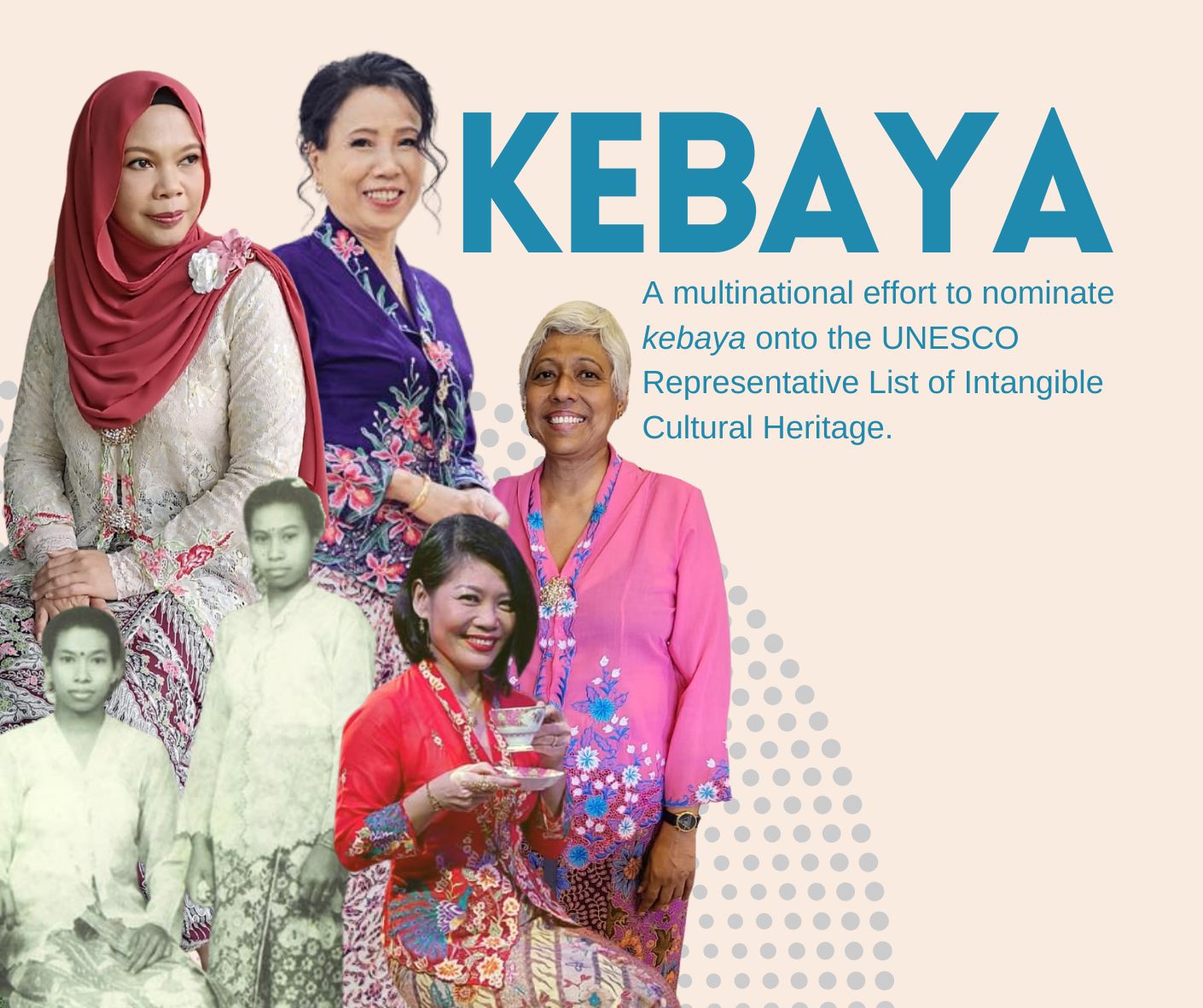Kebaya

📸: For the very first time, Brunei, Malaysia, Singapore and Thailand have jointly nominated the kebaya for the UNESCO Representative List of Intangible Cultural Heritage of Humanity in 2023 (NHB)
What comes to mind when you think of our iconic Singapore Girl, or The Little Nyonya from Mediacorp television series? Arresting images of the beautiful and intricate Kebaya.
A traditional form of women’s dress iconic to Southeast Asia, the Kebaya is a long-sleeved open-fronted upper garment made from a variety of fabrics such as velvet, cotton, gauze, lace or voile, and is often adorned with intricate embroidery. It is typically identified as a blouse or tunic with the collar extending from the back of the neck down to the hems on either side of the front body.
The kebaya’s front is secured with either buttons, pins, or kerongsang (brooch), with an accompanying lower garment known as sarong (a stitched and tubular skirt) or kain kain (a long piece of rectangular cloth wrapped and tucked around the waist), which may at times be secured with a tali pinggang (belt) or stagen (cummerbund). The kebaya is adorned with embroidered motifs known as sulam, sewn on using a combination of stitches. Floral motifs are common due to their feminine associations.
In different parts of Southeast Asia, the kebaya took on varying forms, reflecting the diverse cultural identities of its people. From the ornately embroidered Kebaya Nyonya in Malaysia and Singapore inspired by the Chinese, Malays and the Peranakans, to the elegant and simpler Kebaya Bali, each style tells a story of cultural intersections and historical evolution. As the kebaya offers a form of shared history in the region, and is an intangible cultural heritage element that transcends ethnicity and religion, #DidYouKnow that for the very first time, Brunei, Malaysia, Singapore and Thailand have jointly nominated the kebaya for the UNESCO Representative List of Intangible Cultural Heritage of Humanity in 2023? This was Singapore’s first multinational nomination, and the first ever multinational nomination involving the four countries. The nomination aims to celebrate and showcase how kebaya continues to be made and worn by many communities across Southeast Asia and how its related knowledge and skills are actively transmitted.
In Singapore, the Kebaya has – and especially so in recent years – been a central aspect in the representation and display of cultural heritage and identity for various Singapore communities. For example, a kebaya may feature motifs from Malay, Chinese, Indian, and European cultures, be they flowers, animals, mythical creatures, or figurative elements, or traditional Javanese motifs and batik patterns such as the kawung (palm fruit). The Kebaya has also made its way into traditional performing art forms such as the Wayang Peranakan, or in contemporary theatre productions such as Emily of Emerald Hill. We can also see Kebaya commonly worn during festive occasions such as Hari Raya Puasa, Chinese New Year, or at important rites of passage such as weddings, formal events, parties, and even non-formal occasions. “Modern kebayas” have also sprung up – usually unembroidered, they are made from materials such as printed batik, cotton, satin and chiffon. Many young women today choose to pair the kebaya with Western-style dresses, skirts and even jeans!
Indeed, the Kebaya is a microcosm of the melting pot of cultures and craft traditions in Singapore and the Southeast Asia region. More than a traditional garment, it is a symbol of cultural identity, heritage, and timeless representation for various communities in both formal and casual settings. Its versatility and adaptability to modern fashion trends helps to keep alive a rich cultural heritage and contributes to its ongoing story.
What’s your Kebaya story? Do you own a Kebaya?
Visit ConnexionSG Facebook and
ConnexionSG Instagramfor more content.

